Written By Khine Zaw
In the final phase of the Arakan war, the Arakan Army (AA) has completely captured and taken control of Paletwa region, as well as Maungdaw, Buthidaung, Rathetaung, Ponnakyun, Kyauktaw, Mrauk U, Minbra, Myaybon, Pauktaw, Rambre, Thandwe, Taunggoke, Ann, and Gwa townships.
To achieve full control over the entire Arakan region, the Arakan Army (AA) still needs to capture Kyaukphru Township, where Chinese projects are located; Sittwe, the capital city where Indian projects are present; and Manaung, an island town.
As part of the Three Brotherhood Alliance’s “Operation 1027,” in which the Arakan Army (AA) is involved, the AA launched an attack on November 13, 2023, capturing the junta’s Fone Pike border outpost along the Maungdaw-Ah Ngu Maw Road.
From that day onwards, the Arakan Army (AA) continued launching attacks, capturing one junta base and town after another, gradually taking control of the region.
However, despite the AA announcing on December 29, 2024, that it was open to political dialogue to seek a resolution, Arakan residents claim that the junta’s forces have continued deliberately targeting civilians with attacks.
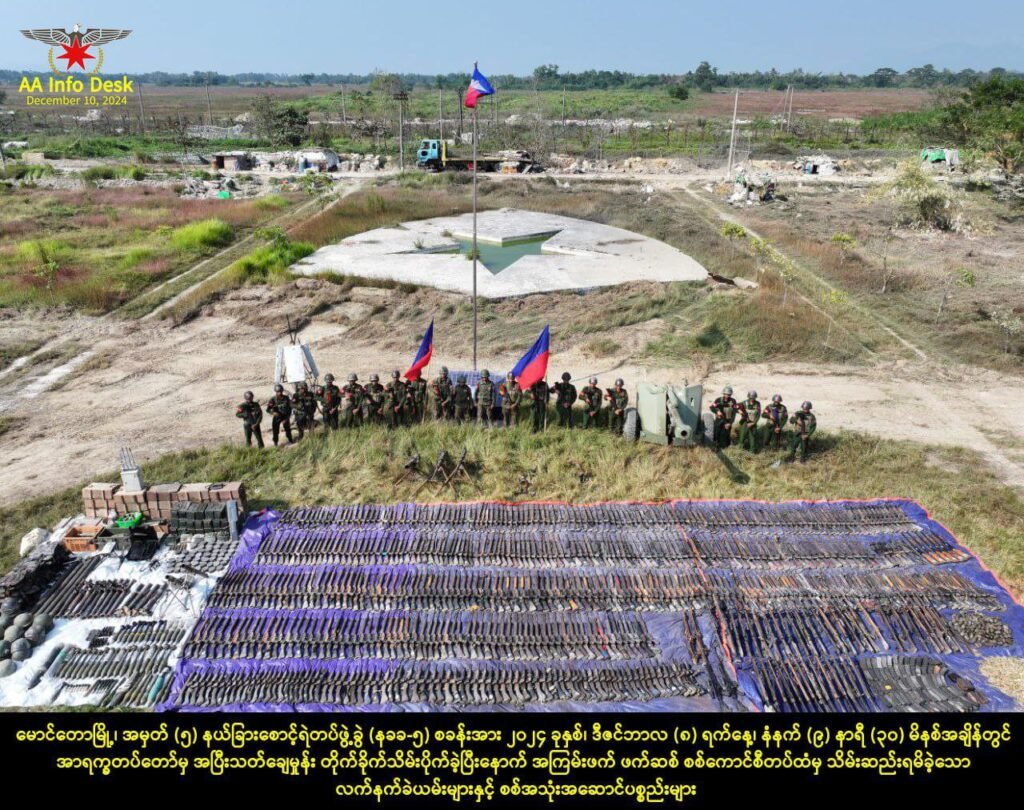
Since the beginning of the final phase of the Arakan conflict, Arakan residents claim that the Myanmar junta has been deliberately targeting and killing civilians daily using heavy artillery, missile strikes, naval warships, fighter jets, and drones.
As a result, the Arakan Army (AA) has carried out warning artillery strikes on the capital, Sittwe. Additionally, clashes between the two sides have intensified in Kyaukphru Township, according to local reports.
Some political analysts initially believed that the Arakan Army (AA) would not launch an offensive to capture Sittwe and Kyaukphru, given China’s strategic interests in the region and the presence of a large number of civilians still trapped in Sittwe. Instead, they expected the AA to pursue negotiations to resolve the situation.
However, the reality on the ground now suggests that these assumptions may no longer hold true.
There had been speculation about whether the Arakan Army (AA) would continue capturing the remaining towns in Arakan or shift its focus towards launching offensives eastward into Bago, Ayeyarwady, and Magway regions. This was based on the AA’s prior movements beyond the Arakan border.
However, the peace talks held in China between the AA and the junta in February did not yield positive results. Since then, the AA has intensified its blockade and encirclement of Sittwe and Kyaukphru. According to local reports, military tensions between the two sides have escalated further in early March.
According to local reports, the Arakan Army (AA), which has completely surrounded the junta bases in these townships, is using heavy weapons seized from the junta to carry out attacks.
Analysts believe these developments indicate that the AA is actively working towards the complete military takeover of the entire Arakan region.
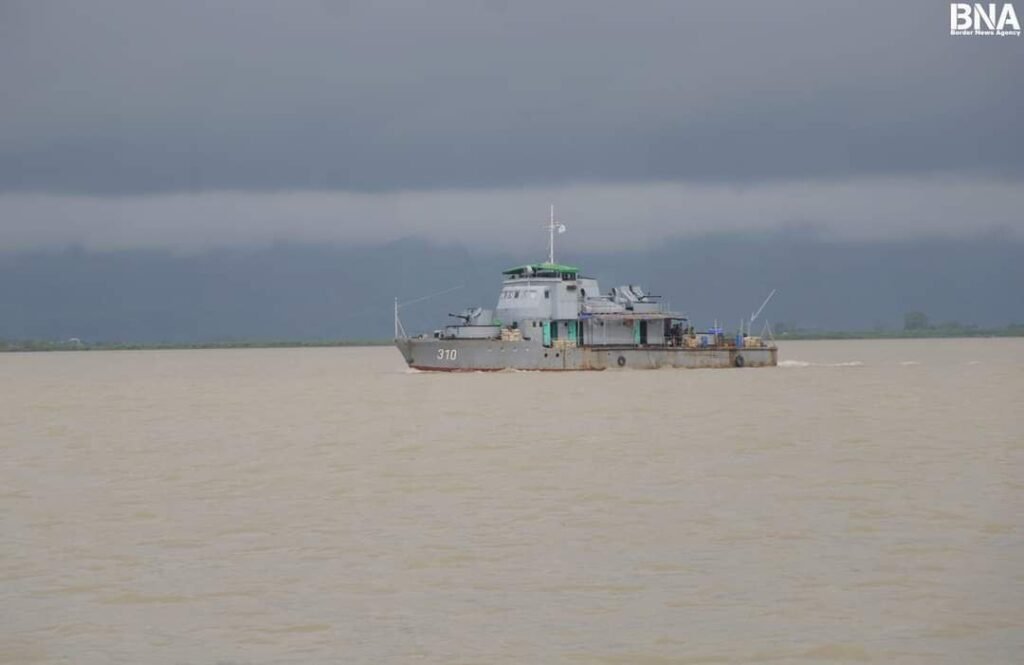
Since capturing Rathetaung, Ponnakyun, and Pauktaw townships, which are adjacent to Sittwe, the Arakan Army (AA) has positioned itself strategically to encircle and blockade the junta’s military bases within Sittwe Township.
Since the beginning of the final phase of the Arakan conflict, the junta has reinforced security in Sittwe, where the State Administration Office and Regional Military Command Headquarters are located. Military preparations included fortifying defenses, placing landmines along riverbanks and creeks surrounding the city.
With almost the entire Rakhine State slipping from its control, the junta has forcibly confined nearly all civilians from surrounding villages into Sittwe. Reports indicate that the junta has been continuously arresting, prosecuting, imprisoning, and even executing civilians in the city.
As a result of these developments, military tensions between the Arakan Army (AA) and the junta forces in Sittwe have continued to escalate.
When the AA had nearly captured all the townships in the Arakan region, they began launching sporadic artillery strikes against the junta’s military bases within Sittwe.
The junta forces have continued to target civilian villages in surrounding areas of Sittwe, including Rathetaung, Ponnakyun, and Pauktaw, using airstrikes and heavy artillery. As a result, dozens of civilians have been killed or injured.
In Sittwe, where military tensions have been rising, the Arakan Army (AA) escalated its artillery attacks in early February, significantly intensifying their offensive.
A ground source told BNA, “Every day, it’s ‘shoot and be shot at.’ There are constant ground battles.”
In recent days, there have been reports of continued ground clashes between the junta forces and the Arakan Army (AA) near Wa Boh and Min Hla villages, located close to Wa Boh Island in Sittwe Township.
A military source told Border News Agency, “The offensive is only going to intensify. It’s been dragging on because of concerns about the safety of civilians.”
Many civilians remain trapped in Sittwe city. Due to restrictions, they are unable to leave the city, even by plane to Yangon. Locals report that those who cannot afford to escape have no safe place to hide, leaving them vulnerable to the ongoing conflict.
A woman, trapped in the city of Sittwe with her six family members, said, “We don’t have money to escape to Yangon. Even if we did escape, we’d end up in their custody. They can arrest us whenever they want, and kill us whenever they want. There’s no way out anymore.”
According to Sittwe residents who work under the military council, the junta is not allowing civilians to leave the city, and they are also preventing their staff from leaving, including to Yangon. They are being forced to operate under strict control with no freedom to move.
A family member of a Rakhine national, who was assigned educational duties in Sittwe, said, “They don’t even allow us to go to Yangon for medical treatment.”
In addition to confining both staff members and civilians within the city, military personnel have been providing intense military training to Muslim youth, as well as members of the Arakan Liberation Party (ALP), who are also trained alongside the military council troops in camps within the city and its surrounding areas, according to sources from Sittwe.
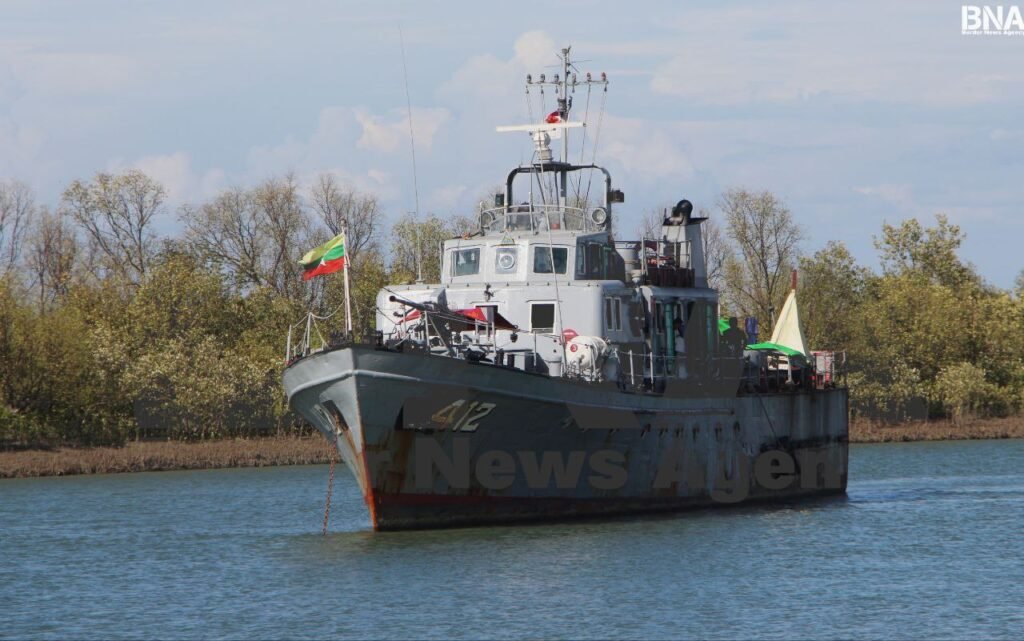
In Sittwe, the administrative offices of the Rakhine State government are located, where the state chief minister and ministers reside.
In this state capital, junta’s military headquarters are located, including the regional military command, the 20th Infantry Battalion, the 232nd Infantry Battalion, the 270th Infantry Battalion, the 344th Light Infantry Battalion, the 354th Light Infantry Battalion, and the 373rd Artillery Battalion.
In addition, the following military units and facilities are located in Sittwe: the 908th Military Engineering Battalion, the 818th Communications Battalion, the 828th Transport and Logistics Battalion, the 8th Field Medical Battalion, the 9th Electrical and Industrial Engineering Battalion, the 8th Combat and Organizational Training School, the 868th Battalion Maintenance Unit, the 4th Communications Workshop, the 962nd Construction Engineering Battalion, the 434th Weaponry Battalion, and the 10th Education School.
Additionally, the 17th Military Hospital with 100 beds, the 2nd Military Security Battalion, the 12th Police Battalion, the 36th Police Battalion, as well as a naval base are also located in Sittwe.
In Sittwe, near the Pointe beach, the 3rd Naval Battalion has been elevated to a command post under the Western Naval Command. A senior officer, holding the rank of General, leads the battalion, which consists of approximately 30 officers and over 300 naval personnel, according to information obtained by Border News Agency.
The 3rd Naval Battalion has been relocated and expanded to Shwe Min Ghan in Sittwe Township, with an approximate strength of 200 naval personnel. They operate various naval assets, including large and small vessels, focusing on logistical support, troop transportation, combat operations, and supply deliveries, according to the junta’s military naval community.
According to local Rakhine residents, in areas near the regional military command headquarters in Sittwe Township, all villages and accessible entry points by water route to Sittwe city have been demolished and sold off. The junta has set up combat outposts in these locations, repurposing homes and areas for military use.
A resident who fled to a liberated area from Sittwe said, “No matter how much preparation is made, once the AA attacks, it won’t take long. Sittwe will fall into the hands of the AA. I think the battle will happen soon.”
Although intense ground battles haven’t occurred yet in Sittwe, observers believe that fierce fighting could break out soon. They predict that the Arakan Army may launch a decisive offensive and intensify their operations in the near future.
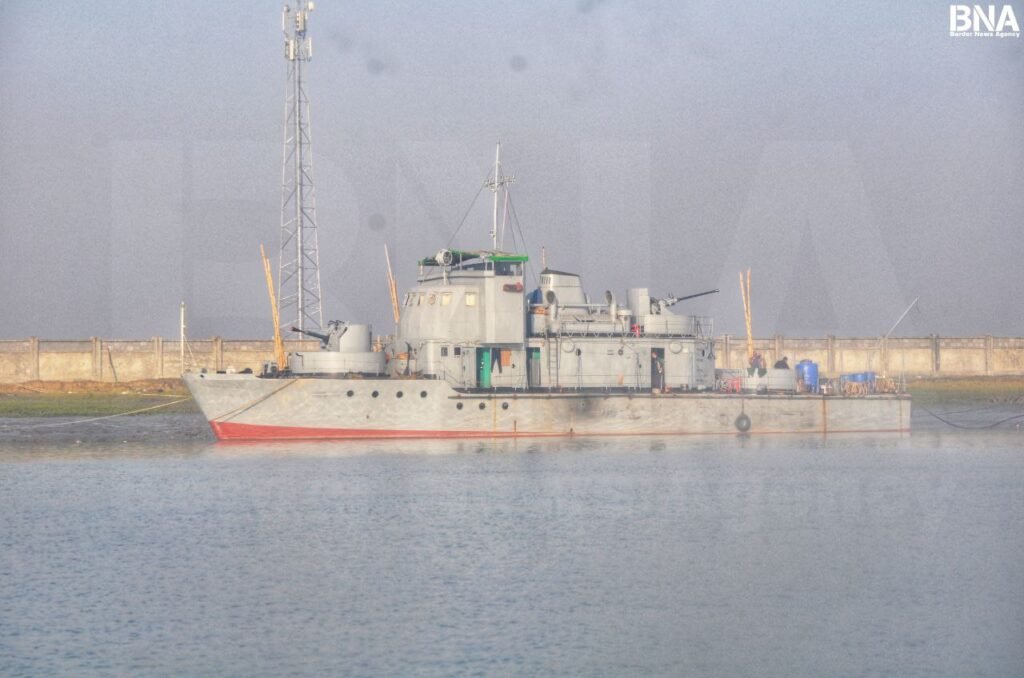
In addition, ground battles have been ongoing in Kyaukphru Township since February 20, with direct clashes continuing, according to locals in Kyaukphyu.
Battles have also been taking place near the Dhanyawadi naval base, located around five miles from Kyaukphru town, as reported by the local residents.
These battles are occurring because the junta forces are expanding its frontlines, according to the residents of Kyaukphru. The Arakan Army (AA) has been responding by counterattacking, according to reports.
The Dhanyawadi naval headquarters in Kyaukphru Township oversees several subordinate units, including the 11th Naval Communications Battalion, the 12th Naval Logistics Battalion, the 13th Naval Administration Battalion, the 14th Naval Armament and Explosive Ordnance Disposal Battalion, the 15th Naval Industrial Battalion, and the 16th Naval Vessel Group. Additionally, it supervises the 18th Naval Base and the frontline base of the 19th Naval Battalion in Man Aung Township, according to Border News Agency’s findings.
At the Dhanyawadi Naval Base in Kyaukphru Township, there are over thirty small naval vessels under the naval command, which primarily oversees naval operations. Additionally, there are approximately a thousand coastal and naval soldiers stationed in the area, according to the military sources.
Additionally, near the Dhanyawadi Naval Base in Kyaukphru Township, in the open sea, the 71st Naval Vessel Group is stationed, and a large submarine is also stationed there. The area is fully prepared for military operations, including amphibious and naval warfare, according to military sources.
In Kyaukphru Township, the junta’s 34th Infantry Battalion, 542nd Light Infantry Battalion, 543rd Light Infantry Battalion, and 32nd Police Battalion are based. Additionally, the 32nd Police Battalion has been reinforced with numerous junta soldiers and weaponry, according to military sources.
In Kyaukphru, junta’s military camps have been established around the city, including at the Ngala Pwe Port, various surrounding ports, and near the Kyauk Talone Pagoda. Small security camps are also set up around the Dhanyawadi Naval Base and near the Police Battalion, according to local residents.
In addition, landmines have been planted around the residential villages near the city and military camps, and many civilians have been killed or injured due to these mines. In the ongoing battles in Kyaukphru, the number of displaced people has reached thousands.
The Myanmar junta has also imposed restrictions on people trying to leave the city, with residents unable to leave the city or surrounding villages for shopping or medical treatment. Local residents report that these restrictions have made life extremely difficult for the civilians trapped inside.
In Kyaukphyu, where large Chinese projects like the oil and natural gas pipeline and the Kyaukphyu Special Economic Zone are located, there have been occasional skirmishes in the past. However, the current battles have escalated significantly, moving beyond the smaller encounters of the past.
Analysts predict that the situation could lead to full-scale confrontations with no clear resolution in sight, making it a more intense and prolonged conflict than before. These ongoing clashes are seen as potentially more devastating and harder to avoid.
A political analyst, who preferred to remain unnamed, said, “It seems like China has already shown its green light.”
Military analysts studying the Rakhine conflict have stated that the final battles of the Arakan decisive war will be the most intense, with both sides competing with their military strategies and weaponry.
Furthermore, since these are the final battles of the war for territorial control, political analysts suggest that the Arakan Army could decisively capture not only Sittwe but also areas like Kyaukphru and Man Aung, instead of leaving them abandoned.
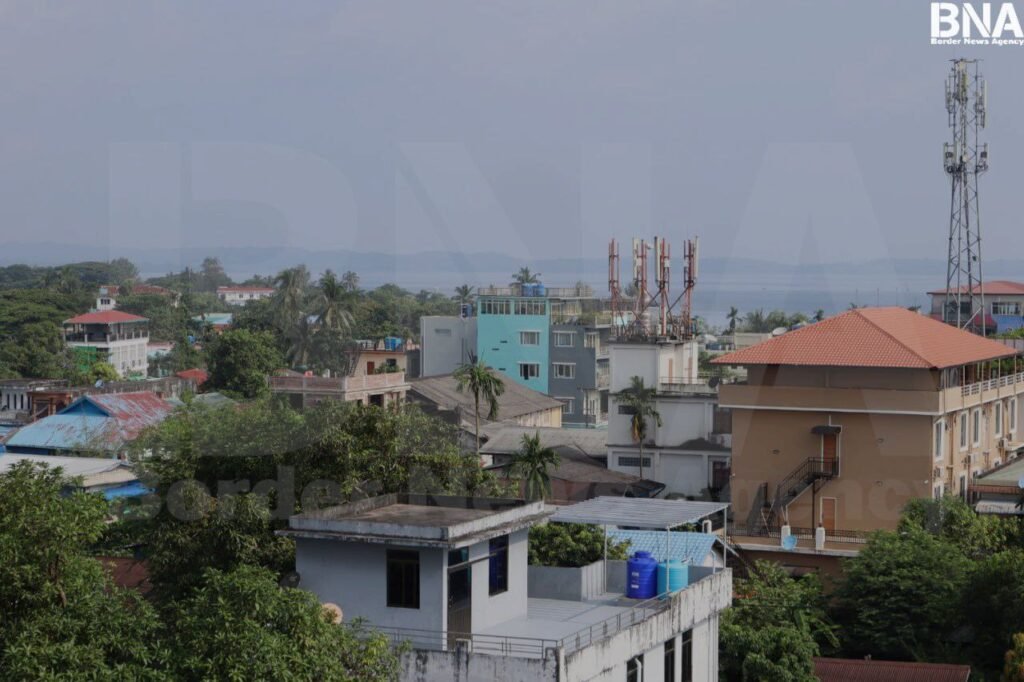
U Myo Kyaw, the General Secretary of the Arakan League for Democracy (ALD), analyzed the situation, saying, “It must be concluded decisively. The reason is that if the entire Rakhine state is not fully secured, leaving areas like Sittwe, Kyaukphru, and Man Aung unoccupied will create long-term problems. We cannot afford to leave gaps.”
The people of Rakhine have stated that in areas controlled by the Arakan Army, the Arakan People’s Government has been operating administrative machinery and providing public services for the people of Rakhine.
Despite international investments and ongoing projects, observers believe that the final battles in these conflict zones will be decisive, marking the end of the remaining clashes as part of the ultimate military confrontation.
U Myo Kyaw further stated, “Whether it’s the remaining city of Sittwe, the Kalatan project, or the Chinese project in Kyaukphru, I believe they will ultimately be secured.”
In the final decisive battle in Arakan, once the Arakan Army secures full control over the entire region, international countries with investments in Arakan will have to engage in direct negotiations with the Arakan People’s Revolutionary Government, according to observers of the Rakhine issue.
U Myo Kyaw stated, “The natural resources of Rakhine should rightfully belong to the Rakhine people. If these resources continue to be exploited, it is essential that the Rakhine people benefit from the profits and outcomes. The Rakhine government that emerges must ensure this is carried out effectively.”
The Arakan Army, which has repeatedly declared its intention to completely capture the entire Arakan region, is expected to carry out the final decisive battles in the Arakan conflict. The people of Arakan believe that, after these final battles, they will inevitably realize their dream of self-rule and governance over their own land.






